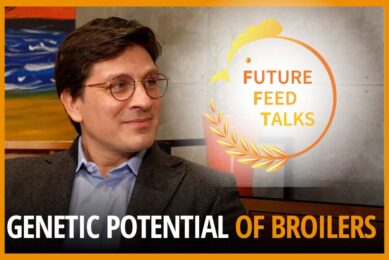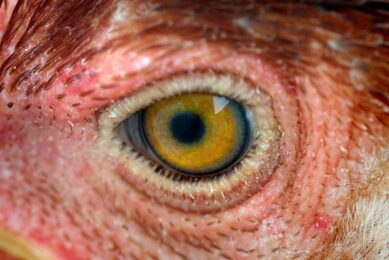Interview: Dr Rachel Hawken, Director of biotechnology at Cobb

The $10 million genomics research collaboration between poultry breeders Cobb and Hendrix Genetics and leading academic institutes, partly funded by the US Department of Agriculture, is now entering its final phase. Dr Rachel Hawken, director of biotechnology at Cobb in the USA, explains in this interview what progress was made and what it entails for the future.
Dr Rachel Hawken: “The main effort of the USDA project has focused on weight, breast meat percentage, and leg health. The design of the project is to conduct a population-wide genome study to correlate specific DNA genotypes (genetic markers) in elite birds with these key performance traits. Success will be measured by comparison of genetic progress achieved by our traditional pedigree selection programme and a selection programme that incorporates DNA markers.”
“The chicken genome was first sequenced in 2004. This effort identified and assigned the DNA sequence for around 85% of the genome. Since then, follow-up efforts in the public sector have been initiated to identify the remaining 15%. At 85% completion we have enough of the genome identified to develop the tools and databases to study the value of DNA-based selection for the poultry industry.”
“That’s the million dollar question. The problem with counting how many genes is that one gene could exist as a number of different types or be unique enough that we don’t recognise them as being genes. This is not only true for the chicken genome, but is also an issue for all sequenced genomes, including human. Gene identification and annotation is the focus of extensive research efforts and intense debate in the genome community. Currently it’s estimated that the chicken genome contains between 20,000 and 25,000 genes.”
“The issue for Cobb as a breeding company is not solely which genes control which traits. This relationship must exist; however, the DNA markers we use identify which pieces of the genome inherited from the parents appear to be important for driving performance in the offspring. The 60,000 DNA markers that we use are distributed evenly along every chromosome of the chicken, independent of the location or identity of specific genes. What we’re most interested in is which pieces and versions of the chromosomes passed on from generation to generation are impacting the performance traits that the industry has determined to be of economic value.”
“That’s a good way to put it. In mammals, the genes themselves represent about two percent of the whole genome. The rest of the 98% of the genome is made up of DNA that is doing something else. Much of it has been shown to be involved in turning genes on and off. This regulatory activity is key for determining what an animal looks like; when and how loud a gene is turned on has a big impact. The ‘fine tuning of gene expression’ is controlled by the DNA sequences, and it’s these subtle differences in regulation – the non-gene sequences – that play a big role in making individual animals unique. But it’s not only the DNA sequences, it’s how the DNA sequences interact with environmental signals that ultimately determines what an animal looks like or, in our case, how well our birds perform in different environments.
“Absolutely, and that’s why this effort becomes very complicated and why we must use thousands of DNA markers to scan the entire genome, what we term genome-wide selection. We expect most of the traits we’re looking at are extremely complex and we anticipate it’s the interaction of thousands of genes together that’s influencing that phenotype (physical trait).If you think of breast percentage, what genes wouldn’t be involved in that? You’ll have genes involved in metabolism, with muscle development, ion transport across cells to make sure every cell has enough oxygen and nutrients. Then there are all the things to do with appetite and growth. There are so many things involved in the breast meat trait alone that instead of just looking at one or two genes, we look at everything together. They call it the infinitesimal model where we anticipate that complex traits result from the interaction of the small effect from thousands of genes.”
Biography • Australian • Director of Biotechnology – Cobb-Vantress since February 2011 • Principal Research Scientist at the Australian Commonwealth Scientific and Research Organization (CSIRO), (2001-2010) exploring the genetics of bovine fertility and developing an industry product for the improvement of fertility in tropically adapted beef cattle. • University of Minnesota, USA, Department of Veterinary PathoBiology (1997-2001), developing gene mapping tools for pigs and identifying genes responsible for growth in commercial pig production systems. • PhD in animal genetics, Melbourne University, Victoria, Australia • BSc (honours) at La Trobe University, Victoria, Australia |
So how do you decide which pedigree birds are worth selecting as breeders?
We genotype them. The genome selection process sounds quite simple on the surface, but it’s not simple at all. We collect the phenotypes and genotypes on thousands of birds, and we call that the training population. This data set of phenotypes and genotypes is used by our computers to ‘learn’ and correlate specific DNA sequences with good performance. There’s a lot of historical information over generations about which birds and families are better than others. We look at how these genotypes differ between good and bad birds and we train our analyses based on that information. Then we can genotype a new population of birds, and determine whether any particular chicken has the DNA sequences of a ‘good’ or a ‘bad’ bird.”
“Exactly. Advances in genotyping technologies are occurring all the time, mostly driven by the needs and efforts of the human medical community. This has resulted in a significant decrease in the cost of the technology. In addition, as we expand our use of the technology, there are economies of scale to be realised not only by us, but by external genotyping providers. This significantly reduces the cost of implementing genome selection in our pedigree programme.”
“It’s one thing to prove that it works and develop the knowledge and analytical capabilities to use the data. A different challenge is how do you actually implement the programme into our normal day-to-day operations. What do we need to do at the farm? How fast do we need to get samples to the lab? How fast do we need to get the genotypes back? In all of this technology, what are the glitches?
Join 31,000+ subscribers
Subscribe to our newsletter to stay updated about all the need-to-know content in the poultry sector, three times a week. Beheer
Beheer








 WP Admin
WP Admin  Bewerk bericht
Bewerk bericht